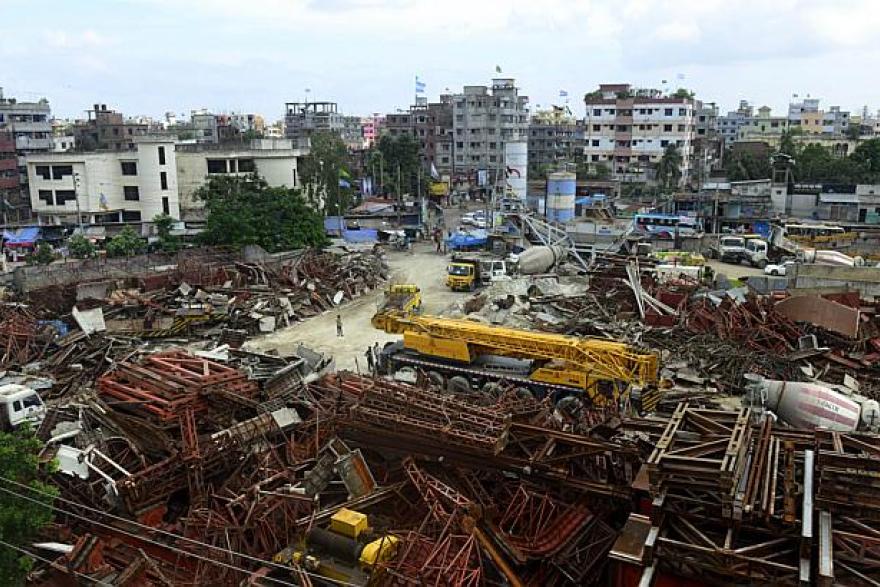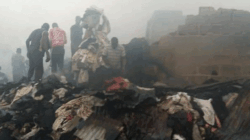Dhaka, August 9 – Afzal Hossain, who lives in a condominium in Shantinagar, appreciates the daily services available right within his high-rise building, and he hopes to purchase another apartment in a comparable complex for his children in the future, a desire shared by many middle-class residents in the city.
Having one or more apartments is not solely Afzal’s goal; it has turned into a common aspiration for numerous upper-middle-class households in Dhaka.
Since the 1990s, hundreds of real estate firms have appeared in the capital, concentrating on building high-rise structures to address this need, while also seeking maximum earnings.
Tolong support kita ya,
Cukup klik ini aja: https://indonesiacrowd.com/support-bonus/
Landlords have also entered the trend, aiming to obtain a share in these initiatives, even if they do not have the resources to construct them on their own.
As per the Bangladesh Portal, the Dhaka Metropolitan Area covers 360 square kilometers. After an administrative adjustment in 2016 conducted by the National Implementation Committee for Administrative Reform (NICAR), the total area of Dhaka’s two city corporations is now 270 square kilometers.
This region makes up less than 1% of Bangladesh’s overall land area but houses almost 20 million residents, resulting in a population density exceeding 50,000 individuals per square kilometre.
In response to this significant housing need, high-rise structures have steadily emerged over the past three decades.
Rajuk’s data suggests approximately 200,000 structures in Dhaka city, yet urban planners think the real figure surpasses 600,000 within the two city corporations and continues to grow each year.
Although Dhaka is still not well-planned, the Ministry of Housing and Public Works, via Rajuk, initiated the creation of a Detailed Area Plan (DAP) designed to prevent the city from becoming uninhabitable. However, the plan is still on hold due to ongoing discussions and multiple revised versions.
A key element of the DAP involves controlling building height in relation to road width and plot dimensions.
Roads with limited width should impose restrictions on the size of structures. However, housing developers have opposed the Floor Area Ratio (FAR) limits outlined in the plan.
In May, Rajuk faced pressure from developers who demonstrated, calling for a higher FAR. Environmental activists and planners argue that these modifications benefit developers at the city’s expense.
Rising Land Costs Due to Housing Demand
Half a century ago, land costs in the prestigious area of Gulshan varied from Tk 5,000 to Tk 8,000 per katha (approximately 720 square feet). Now, the prices have surged to as high as Tk 50-80 million per katha, varying based on the specific location within Gulshan.
Sabbir Hossain, who lives in Gulshan, stated, “My father purchased four and a half kathas of land for 10,000 taka per katha in the early 80s. We constructed our home on that property. The present market value exceeds 80 million taka.”
Many years back, the Baridhara area was not in high demand and was sold at a low price. Now, it is considered the priciest residential zone in the capital, as per official government rates — officially exceeding Tk 75 million per katha, with actual market values said to range between Tk 100 to 150 million.
In certain instances, costs have risen by hundreds of thousands of percent relative to levels after independence.
Commercial land costs are also rising sharply. In Motijheel, prices vary from Tk 30-60 million per katha; in Banani, Tk 40-70 million; and in Shantinagar, Tk 30-50 million.
Empty lots in these prime locations are almost non-existent, as most privately owned land is taken up by housing company apartments. Builders are now looking towards more reasonably priced land in the outskirts of Dhaka.
For instance, ten years back, property prices in the Shadhinota Sarani neighborhood of northern Badda varied between Tk 200,000 and Tk 300,000 per katha, increasing to Tk 1-1.5 million a decade ago.
As housing companies emerged, prices went up to Tk 3-3.5 million, and now land is being sold for Tk 5-6 million per katha.
Sultan Mia, a long-time inhabitant of the region, remembered, “This place once had ponds and woodlands, with rice fields deeper inland. Along the road, numerous people lived in tin-roofed huts.”
Currently, some small houses are still present, but the region is mainly characterized by 8-10 story buildings, primarily constructed by residential developers.
Farmers, who cannot afford to build multi-level structures on their own, frequently lease their land to developers offering them a share in the high-rise buildings, a deal that many embrace with enthusiasm.
The densely populated areas of Beribadh, Badda, and Vatara do not have spacious roads, play areas, or green spaces. Skyscrapers continue to be constructed as middle-class residents move in, resulting in more traffic jams and difficult living situations.
Inadequate drainage and deteriorating roads affect Chuadanga Municipality.
The Role of RAJUK: Preserving or Compromising Dhaka?
On Sunday (August 10), the Ministry of Housing and Public Works is set to complete adjustments to the DAP amid significant influence from housing developers.
A gathering on August 3 concluded without any statements, yet reports suggest significant changes that benefit the industry.
Multiple Rajuk officials stated that the updated plan is expected to raise the floor area ratio considerably, allowing for higher structures.
In addition, the city’s construction rules are anticipated to experience significant modifications to simplify approval processes.
Programmers and property developers both aim to gain permission to construct taller buildings, stating there is significant interest in apartments and challenging why the government should obstruct this initiative.
Officials from Rajuk refused to provide a direct response.
Efforts to contact the Rajuk Chairman, Reazul Islam, remained unreturned, while the Chief Engineer, Nurul Islam, and the Chief Urban Planner, Ashraful Islam, could not be reached for comment because of medical issues.
A high-ranking Rajuk representative, who wished to remain unidentified, stated, “Real estate developers are pushing hard to increase the floor area ratio by double or more in the updated DAP. Additionally, there will be concessions provided to developers in other areas.”
He mentioned that higher FAR will be permitted in high-demand areas including Rampura and Badda, as well as in outer regions like Savar, Aminbazar, Hemayetpur, and Tongi.
Developers vs. Planners
The Real Estate and Housing Association of Bangladesh (REHAB) is advocating for consistent FAR regulations throughout Dhaka, labeling the existing regional differences as unfair.
MA Awal, REHAB’s Vice President-1 and Managing Director of Haveli Property Development, stated, “DAP should be applied uniformly. It is unjust to have varying FAR rates in different regions. Providing a higher FAR in Basundhara compared to Mirpur is discriminatory towards Mirpur’s residents.”
When questioned about the reasoning behind permitting high-rise structures on narrow streets, Awal stated, “Each small road in Dhaka leads to a main road. It is wrong to compare government-designed areas such as Gulshan-Baridhara with private developments.”
In contrast to planners’ worries regarding Dhaka’s declining quality of life, Awal considered these claims as propaganda.
He claimed that environmental damage is common and criticized the housing industry without justification.
The president of the Bangladesh Institute of Planners, Adil Mohammed Khan, dismissed the developers’ assertions, saying, “Their comments about discrimination are driven by commercial interests. Effective urban planning includes schools, parks, and recreational areas, not just road networks. Narrow streets restrict the size and height of buildings—this is fundamental to urban planning. Refusing to acknowledge this jeopardizes Dhaka’s quality of life while safeguarding the real estate sector.”
Khan cautioned that officials could pursue legal measures if the updated DAP jeopardizes intended growth.
He highlighted the importance of decentralizing Dhaka to reduce population strain, cautioning that not taking action will make the city less habitable over time.







